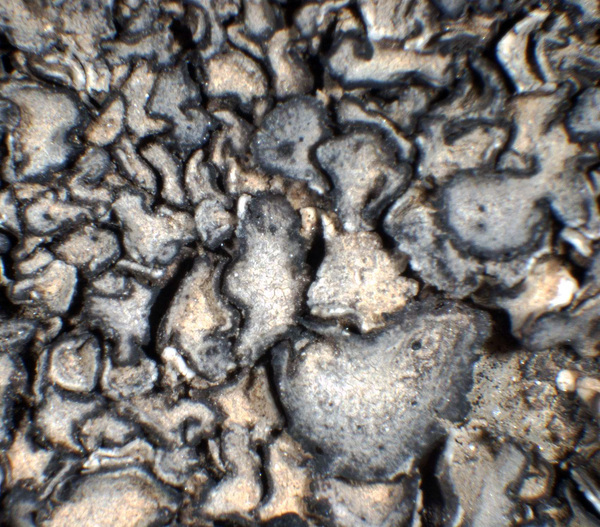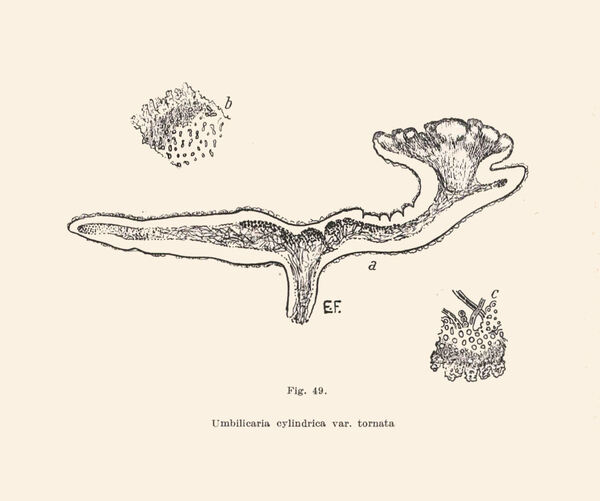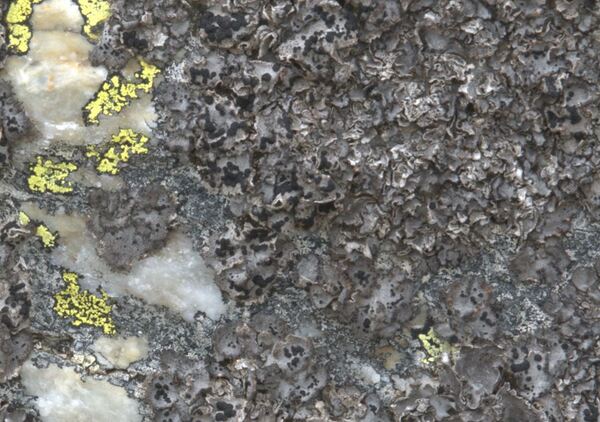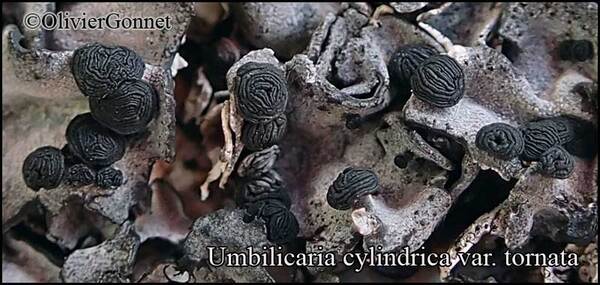Umbilicaria cylindrica var. tornata (Ach.) Nyl.
Lichenes Scand.: 117, 1861. Basionym: Gyrophora tornata Ach. - K. Vetensk.-Akad. Nya Handl., 29: 274, 1808.
Synonyms:
Distribution: N - Frl, TAA (Nascimbene & al. 2022), Lomb, Piem (Isocrono & Falletti 1999, Isocrono & al. 2004, 2006), VA (Borlandelli & al. 1996, Piervittori & Isocrono 1999, Piervittori & al. 2001, Isocrono & al. 2008, Matteucci & al. 2015c), Emil (Fariselli & al. 2020). C - Sar. S - Bas (Potenza & al. 2014), Cal (Puntillo 1996).
Description: Thallus foliose-umbilicate, heteromerous, dorsiventral, polyphyllous, small, to 1 cm wide, but sometimes only 2-3 mm wide, of densely crowded, raised, lobes, usually forming large swards. Lobes with rounded or irregularly incised margins bearing a few flattened, branched, black cilia. Upper surface brownish grey, dull, slightly wrinkled or almost even, sometimes with a few folds and ridges around the umbilicus, giving way to a reticulate pattern. Lower surface grey-white, tan or pink, even, smooth, almost completely naked or with a few cylindrical, pale, simple rhizinomorphs; thalloconidia absent. Upper cortex 10-20 µm thick; medulla white, 3-layered, the upper and lower layers loose, with an arachnoid plectenchyma, the layer inbetween with a compact plectenchyma; lower cortex 10-20 µm thick, scleroplectenchymatous. Apothecia fairly numerous, black, gyrodisc, markedly stipitate, to 2-3 mm across, convex with few deep gyri. Epi- and hypothecium dark; hymenium colourless. Asci 8-spored, clavate, thick-walled, with an amyloid apical dome, Umbilicaria-type. Ascospores 1-celled, hyaline, ellipsoid, 8-15 x 3–9 µm. Pycnidia numerous, immersed, bottle-shaped, with a brown wall, and a dark brown ostiole. Conidia c. 3-4 x 0.8 µm. Photobiont chlorococcoid. Spot tests: medulla K- or K+ yellow turning red, C-, KC- or KC+ faintly red, P- or P+ orange. Chemistry: medulla with variable amounts of norstictic acid and sometimes with very low amounts of gyrophoric and lecanoric acids.
Note: on very exposed surfaces of siliceous rock, a weakly differentiated variety, apparently adapted to more xeric conditions.
Growth form: Foliose, umbilicate
Substrata: rocks
Photobiont: green algae other than Trentepohlia
Reproductive strategy: mainly sexual
Commonnes-rarity: (info)
Alpine belt: common
Subalpine belt: rather common
Oromediterranean belt: rare
Montane belt: absent
Submediterranean belt: absent
Padanian area: absent
Humid submediterranean belt: absent
Humid mediterranean belt: absent
Dry mediterranean belt: absent

Predictive model
Herbarium samples
Growth form: Foliose, umbilicate
Substrata: rocks
Photobiont: green algae other than Trentepohlia
Reproductive strategy: mainly sexual
Commonnes-rarity: (info)
Alpine belt: common
Subalpine belt: rather common
Oromediterranean belt: rare
Montane belt: absent
Submediterranean belt: absent
Padanian area: absent
Humid submediterranean belt: absent
Humid mediterranean belt: absent
Dry mediterranean belt: absent

Predictive model
| Herbarium samples |
 INDEX FUNGORUM
INDEX FUNGORUM
 GBIF
GBIF
 DOLICHENS
DOLICHENS






